
|
|
|
|
 |
|
Home Site Search Contact Us Subscribe
|
|
|
|
Celebrating Green
The decade-long history of the AIA Committee on the Environment's Top Ten Green Projects program is a portrait of evolution in the field. By Kira Gould January 2, 2007 Editor’s note: The deadline for submissions to 2007 AIA/COTE Top Ten Green Projects Awards has been extended to January 31, 2007 (link below).
As chair of the American Institute of Architects Committee on the Environment (AIA/COTE) in 1997, architect Gail Lindsey, FAIA, saw a need for case studies in sustainable design. “We all needed to see and study the best practices. We needed to learn from the exemplars.” Soon, the Top Ten Green Projects program was born (then called the Earth Day Top Ten). After a decade, it has matured into a well-respected awards program known for honoring both qualitative and quantitative excellence.
Looking back at 10 years of the Top Ten program offers a unique glimpse of the sustainable design movement. Lindsey is pleased to see the progress. “We are beginning to express ideas about the interconnectedness of all things in conjunction with the individual parts such as energy efficiency, material selection, or indoor air quality,” she says. “Design teams are moving towards a holistic approach to the built environment. We are in the early stages of understanding the simple yet elegant nature of this approach.”
Recognizing design as a holistic, integrated endeavor, the program asks for narrative descriptions and metrics for 10 measures of sustainable design: sustainable design intent and innovation; regional/community design and connectivity; land use and site ecology; bioclimatic design; light and air; water cycle; energy flows and energy future; materials, building envelope, and construction; long life, loose fit; collective wisdom and feedback loops. High-caliber juries look for solutions that seamlessly blend beauty, utility, and performance.
Requiring both narratives and metrics has helped redefine the notion of context, stressing that architects and their colleagues need to think beyond the building to site, community, mobility, infrastructure, and even global concerns. As these metrics have developed, they also send the message to project teams about the value of data collected through commissioning, monitoring, metering, occupant surveys, and more. “There is a real value to looking at project stories and their data,” Lindsey says. “As more projects participate in programs like this one, the wealth of lessons learned increases.” Eventually, those lessons will lead us past goals for “greener” projects to thinking about issues such as biophilia and regenerative design. “Both concepts look at the interconnectedness of our actions and the broader impacts every design decision directly makes on our long-term self interest,” she says.
The 10-measure framework has also helped encourage design teams to explore and question the mindset, metrics, and ongoing processes for improvement in our built environment. Lindsey suggests that focusing on design intent has helped teams ask deeper questions earlier on. She lauds the program’s emphasis on passive design. “An increased awareness of passive design strategies has begun to enhance building performance and human productivity. This is a key question for designers: What can be done before technological components are addressed?”
Henry Siegel, FAIA, sees this award as part of a more general movement to redefine good design. “In most awards programs, jurors look primarily at aesthetic issues – a much leaner set of considerations about what makes a good building,” he says. “Design awards reward aesthetics. LEED® ratings reward performance. The Top Ten program does both.” His firm, Siegel & Strain Architects, has won the honor twice and he has served as a juror; he now serves on the AIA/COTE national advisory group and oversees the Top Ten.
Susan Szenasy, editor-in-chief of Metropolis magazine, will serve on the Top Ten jury set to meet in March (entries are due January 31) and has followed the program for years: “AIA/COTE winners are projects that examine whole systems of design. They are a result of careful considerations of structural and material efficiencies, they integrate daylight and examine how it can connect us to the natural world, and, as a result of this integrated approach, they provide spaces fit for healthy human habitation. This last thought is most important, especially since we’re coming out of an age of sick buildings.”
Mark Fierro, spokesperson for the Animal Foundation in Las Vegas, which won a 2006 Top Ten award for the project and its team, led by Tate Snyder Kimsey Architects, says that the recognition is an endorsement of their efforts. “We are so proud that our facility is a statement about how to build for the future in our region. This award says ‘it is beautiful and it performs from a sustainability perspective.’ That has real value.”
Siegel suggests that the demands of the program are similar to demands of sustainable design itself. “This award has the effect of valuing what the left- and right-brain parts of what we do at the same time.” Seattle’s Miller|Hull Partnership has earned the Top Ten nod four times. David Miller, FAIA, calls the program “one of the most credible award programs that exists anywhere for architecture.”
Several Top Ten winners have also been AIA Honor Award winners and the 2006 crop of Business Week/Architectural Record winners includes two Top Ten winners. Not too surprising, perhaps, as sustainability is increasingly woven into public and private organizations’ missions and business plans.
Over time, the U.S. Environmental Protection Agency and its Energy Star program, the U.S. Department of Energy and its High Performance Buildings Database program, and BuildingGreen have contributed essential support to the Top Ten program.
Click AIA/COTE Top Ten Awards to review detailed project descriptions that include analyses of: Process; Finance; Land Use; Site and Water; Energy; Materials; Indoor Environment; Images; Ratings and Awards; and Lessons. Architects’ contact information can be found under Learn More.
Kira Gould, Assoc. AIA, LEED AP, is the incoming 2007 chair of the AIA Committee on the Environment. She is a senior associate in communications with Gould Evans, a seven-office design firm, and the co-author, with Lance Hosey, AIA, LEED AP, of Women in Green: Voices of Sustainable Design, forthcoming in April from Ecotone Publishing.
|
(click on pictures to enlarge)  (Nic Lehoux) 2006: Ballard Library and Neighborhood Center, Seattle, WA, by Bohlin Cywinski Jackson Architects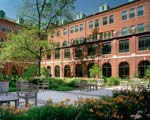 (Barry Halkin) 2006: Immaculate Heart of Mary Motherhouse Renovation, Monroe, MI, by Susan Maxman Partners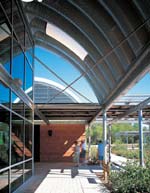 (Hester + Hardaway) 2006: World Birding Center, Mission, TX, by Lake|Flato Architects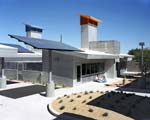 (Tom Bonner) 2006: The Animal Foundation Dog Adoption Park, Las Vegas, by Tate Snyder Kimsey Architects (Rob Wellington Quigley) 2005: Leslie Shao-Ming Sun Field Station, Woodside, CA, by Rob Wellington Quigley, FAIA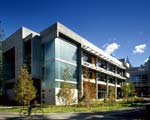 (Lara Swimmer) 2005: Seminar II, The Evergreen State College, Olympia, WA, by Mahlum Architects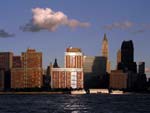 (Jeff Goldberg/Esto) 2004: 20 River Terrace, The Solaire, New York City, by Cesar Pelli & Associates (now Pelli Clarke Pelli)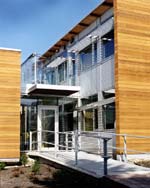 (Enrico Dagostini) 2004: City of White Rock, British Columbia, Canada, by Busby + Associates (now Busby Perkins & Will)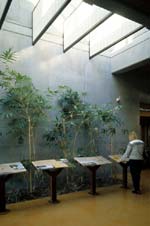 (Eckert & Eckert) 2004: Pierce County Environmental Services, University Place, WA, by The Miller|Hull Partnership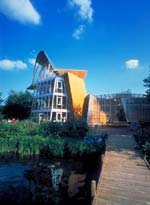 (Peter Hubbe) 2003: Steinhude Sea Recreation Facility, Steinhude, Germany, by Archimedes (J.D. Peterson) 2003: Wine Creek Road Residence, Healdsburg, CA, by Siegel & Strain Architects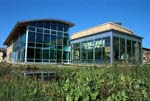 (Oberlin College/Courtesy William McDonough + Partners) 2002: Adam Joseph Lewis Center at Oberlin, Oberlin, OH, by William McDonough + Partners (Prakesh Patel) 2001: Chesapeake Bay Foundation Philip Merrill Environmental Center, Annapolis, MD, by SmithGroup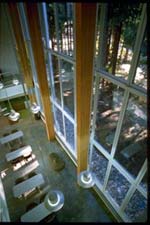 (Mike Sherman) 2000: C.K. Choi Building, Vancouver, BC, Canada, by Matsuzaki Wright Architects (Mike Sinclair) 1999: Deramus Education Pavilion, Kansas City Zoo, MO, by BNIM Architects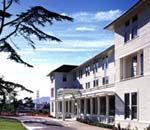 (Richard Barnes) 1998: Thoreau Center for Sustainability, San Francisco, CA, by Leddy Maytum Stacy Architects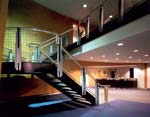 (Maxwell Mackenzie) 1997: NPR (National Public Radio) Headquarters, Washington, DC, by Burt Hill Kosar Rittlemann |
© 2007 ArchNewsNow.com